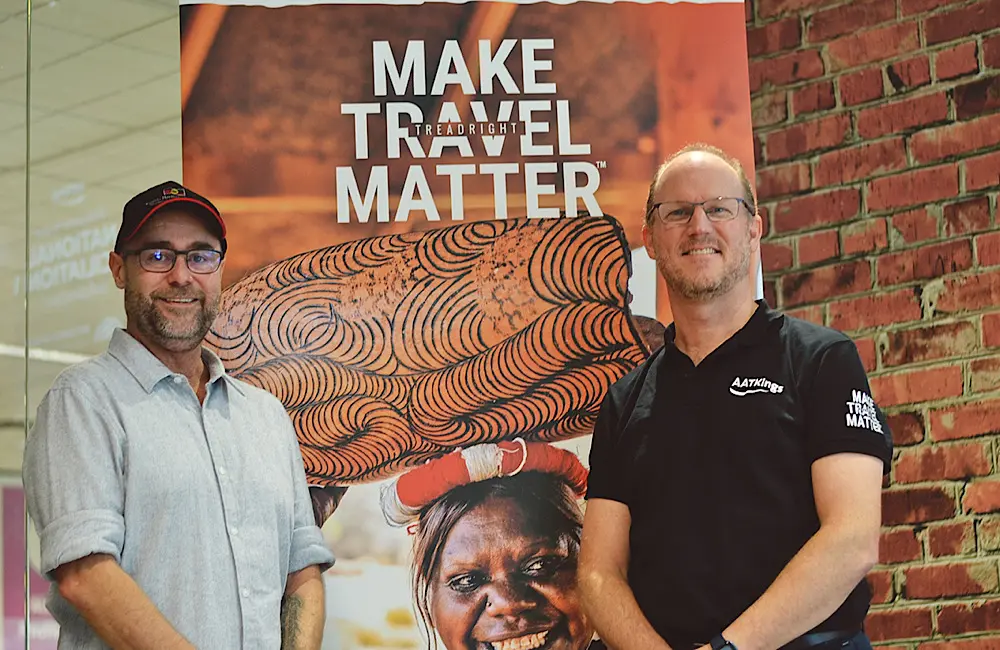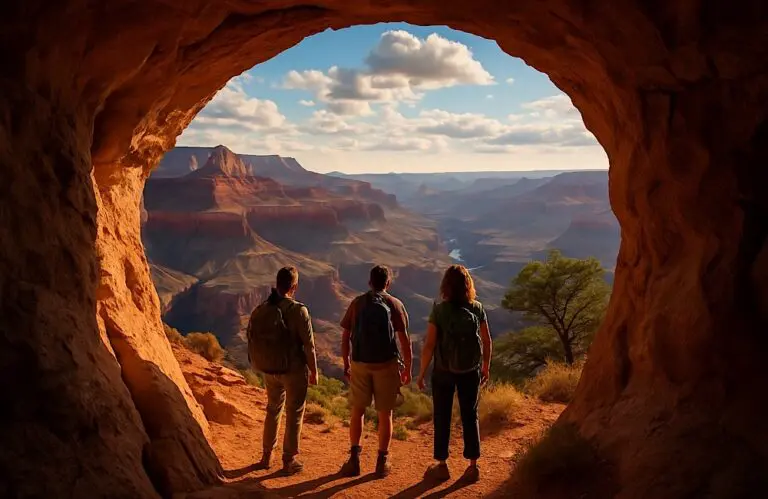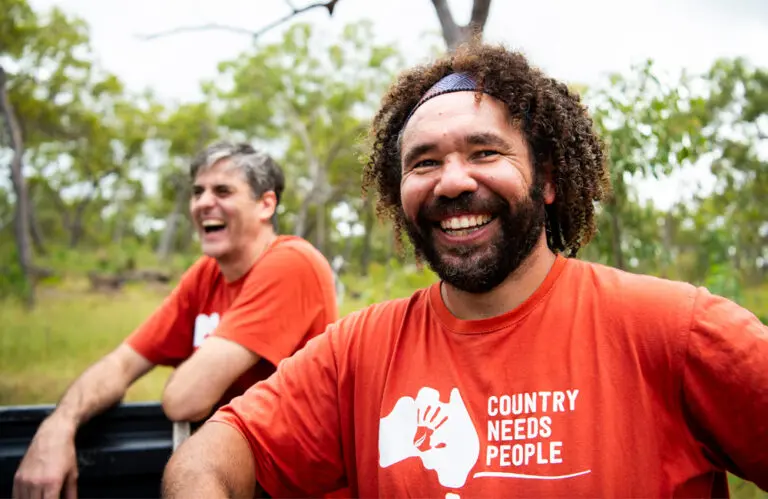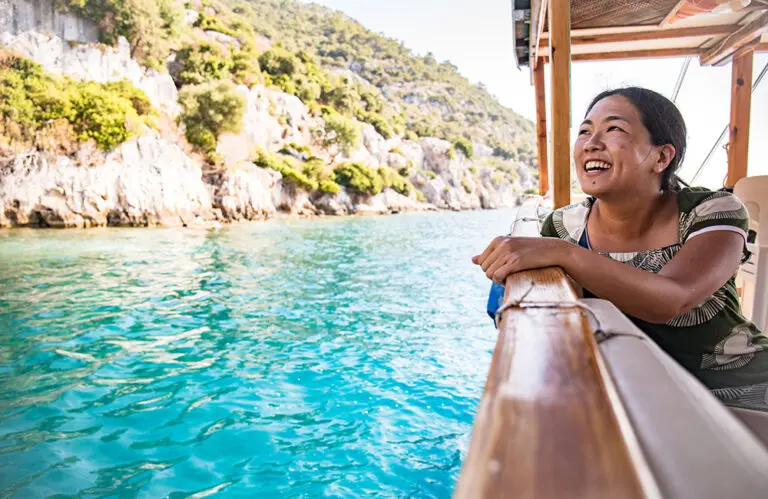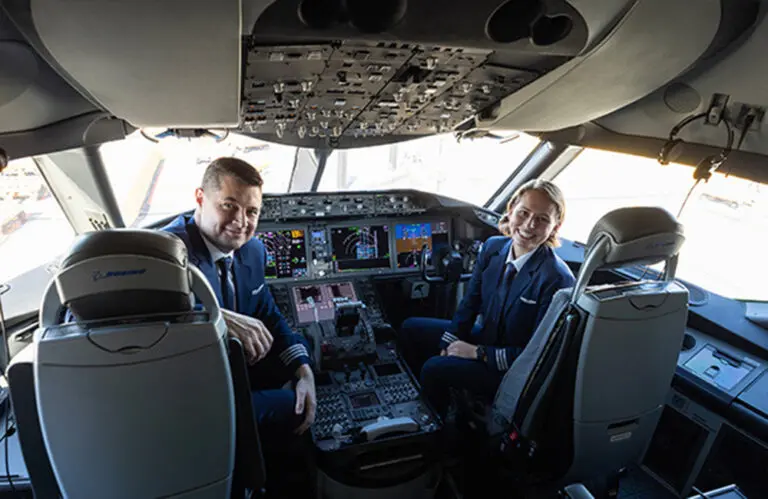Located by Melbourne’s Yarra River, the Koorie Heritage Trust is a beacon for preserving and promoting the living heritage of Aboriginal Victoria. Under the leadership of Rob Hyatt, the Trust celebrates and sustains the vibrant traditions and contemporary expressions of Aboriginal Culture. In our interview, Hyatt explores the power of Welcome to Country ceremonies, the fusion of traditional and modern practices, and the Trust’s mission to keep Wurundjeri Culture alive and thriving in today’s world.
Rob Hyatt, Manager of Cultural Experiences for Koorie Heritage Trust, has a passion for Victoria’s unique Culture and the importance of Aboriginal voice, identity, self-determination and cultural expression. As a First Nations man, Rob deeply appreciates the importance of the Welcome to Country by Wurundjeri elders such as Aunty Joy Murphy Wandin.
Why are Welcome to Country ceremonies so important, and how do they contribute to cultural understanding?
They are important as they have always been a Traditional ceremony for First Peoples across our country for thousands of years as a cultural practice. To be in a position of practising these ceremonies today talks to the strength and resilience of our Culture that has been maintained and passed on from generation to generation despite the impacts of colonisation.
They also support a safe cultural immersion from our broader communities to engage in our Culture and to learn and gain cultural understanding. Each Nation has its own Welcome to Country ceremony with unique language and Culture on display for them. This helps to understand the diversity of Aboriginal Culture across Australia.
The Koorie Heritage Trust bridges the gap between traditional and contemporary First Nations Culture. How do you see these two aspects informing each other?
Traditional Culture brought with it particular styles of artwork and expression, which informed the knowledge of Culture that was then handed down from one generation to the next through Cultural Lore. This continues today, even for those artists who work in contemporary styles and mediums.
Some artists continue to practice traditional styles in very contemporary pieces, while some develop art in contemporary mediums such as photography, fashion, jewellery, graphic design, ceramics as well as contemporary painting. However, regardless of the medium, it is still an expression of the artist’s Culture and how they chose to express their Culture in that peice of work, which is very much a continuation of traditional Culture and practice in itself.
What role do cultural experiences play in fostering understanding and cultural appreciation?
Cultural experiences play an extremely important role in understanding and appreciation. They provide a learning tool for first understanding the diversity of Aboriginal and Torres Strait Islander Cultures across Australia. Every Nation has its own Culture, stories, lore, and cultural expression, which could be very different from one to the other. The more cultural experiences that people can engage in, the more understanding they gain from experiencing diversity.
This sits well in Australia today for tourists, for example. You can experience cultural experiences across different Nations and gain an appreciation of the diversity of the Culture itself. Just as importantly though, you can have these experiences in very diverse places as well, inclusive of the natural environment in our regional areas of every State and Territory, cultural sites that are thousands of years old across our landscapes and then very contemporary cultural experiences in our urban centres and capital cities such as Melbourne.
Melbourne sits on the traditional lands of the Wurundjeri people. How does the Koorie Heritage Trust work to keep their voice and stories alive?
The Koorie Heritage Trust acknowledges that we conduct our cultural tours on the lands of the Wurundjeri Woiwurrung People, and we provide this acknowledgement to all our guests. We talk to the landscape that Melbourne/Narrm once was before colonisation and speak to the impact of colonisation. However, we talk about the resilience of Culture and, in particular, how the Wurundjeri Woiwurrng Culture is alive and vibrant, and you can find it in our city today that it is an important part of the vibe of the city and not just part of Melbourne’s past.
What are some of the biggest challenges you face in preserving and promoting Victorian First Nations Culture?
The biggest challenge is getting beyond the cliche or romanticised view of Aboriginal Australia today which quite often overlooks Victoria. Taking on that challenge means putting Aboriginal Victoria on the map, especially for our international visitors. Again, it is promoting the diversity of Aboriginal Australia and all its cultures and all the places it can be experienced, inclusive of Victoria. I believe it is a part of the need of educating or re-educating the tourism industry of what is Aboriginal Australia and what is an Aboriginal cultural experience.
How long have you been partnering with AAT Kings, and what does the partnership bring you and the Koorie Heritage Trust?
We have started partnering with AAT Kings for a year or two since 2022. The partnership supports the promotion of the Koorie Heritage Trust to your guests and customers and in doing that, promotes the cultural experiences that are possible in Victoria.
On a more social level, as a not-for-profit Aboriginal cultural centre and with our tours and shop operating as a social enterprise, the AAT Kings partnership in bringing business to the Koorie Heritage Trust supports Aboriginal employment and our Aboriginal artists, businesses and producers.

AAT Kings celebrated National Reconciliation Week by hosting Rob Hyatt from Koorie Heritage Trust, one of its Indigenous partners. The event highlighted Indigenous tourism and showcased AAT Kings’ commitment to cultural understanding. Guests enjoyed bush tucker and learned about the Trust’s mission to break stereotypes and empower young First Nations people. A lively Q&A explored ongoing Reconciliation efforts and respectful cultural engagement.


